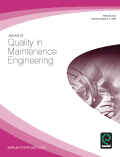
Journal of Quality in Maintenance Engineering
Scope & Guideline
Advancing Excellence in Maintenance Engineering
Introduction
Aims and Scopes
- Predictive and Condition-Based Maintenance:
Research focused on developing techniques and frameworks for predictive maintenance, utilizing technologies like machine learning and data analytics to forecast equipment failures and optimize maintenance schedules. - Reliability-Centered Maintenance (RCM):
Exploration of RCM methodologies that prioritize maintenance activities based on reliability and risk assessments, ensuring optimal performance and longevity of equipment. - Sustainable Maintenance Practices:
Studies that investigate the integration of sustainability principles into maintenance practices, including energy efficiency and waste reduction strategies. - Maintenance Management Frameworks:
Development of comprehensive frameworks and models for effective maintenance management, including Total Productive Maintenance (TPM) and Lean maintenance approaches. - Emerging Technologies in Maintenance:
Research on the application of advanced technologies such as IoT, AI, and automation in maintenance processes to improve efficiency and reduce downtime. - Asset Management and Optimization:
Analysis of asset management strategies and optimization techniques to enhance the performance and reliability of industrial systems.
Trending and Emerging
- Machine Learning and AI in Maintenance:
A significant increase in research applying machine learning and artificial intelligence for predictive maintenance, fault detection, and decision-making processes is evident, reflecting the industry's shift towards data-driven methodologies. - Industry 4.0 and Smart Maintenance:
Emerging themes related to Industry 4.0 technologies, including IoT and smart sensors, are gaining traction, emphasizing the need for interconnected and intelligent maintenance solutions. - Sustainable and Green Maintenance Practices:
There is a growing focus on sustainable maintenance practices that prioritize environmental responsibility and resource efficiency, aligning maintenance strategies with broader sustainability goals. - Advanced Reliability Analysis Techniques:
Research exploring advanced reliability analysis methods, including fuzzy logic and probabilistic approaches, is on the rise, supporting the need for more nuanced assessments of maintenance strategies. - Digital Transformation in Maintenance Management:
The trend towards digital transformation in maintenance management, including the development of integrated maintenance management systems and digital twins, is becoming increasingly prominent.
Declining or Waning
- Traditional Preventive Maintenance:
There has been a noticeable decline in research centered solely on traditional preventive maintenance strategies as industries increasingly adopt predictive and condition-based maintenance techniques. - Reactive Maintenance Strategies:
The focus on reactive maintenance approaches, where maintenance is performed only after equipment failure, is waning in favor of more proactive and predictive methodologies. - Manual Maintenance Processes:
Research exploring manual maintenance practices is decreasing as automation and digital solutions become more prominent in the maintenance landscape, leading to a reduced interest in manual methodologies. - General Maintenance Training:
Studies focused on general training methods for maintenance personnel are diminishing as there is a growing emphasis on specialized training aligned with specific technologies and methodologies. - Basic Maintenance Performance Metrics:
The exploration of simplistic maintenance performance metrics is declining, with an increasing focus on comprehensive, multi-dimensional performance assessment frameworks.
Similar Journals
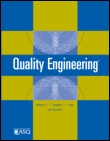
Quality Engineering
Advancing excellence in quality assurance and engineering.Quality Engineering, published by Taylor & Francis Inc, is a leading journal in the field of Industrial and Manufacturing Engineering and Safety, Risk, Reliability, and Quality. With a focus on the advancement of quality assurance and management practices, this journal has been a valuable resource since its inception, featuring research that spans from 1970 to the present day. The journal holds a commendable placement in the 2023 category quartiles, ranked Q2 in both relevant fields, highlighting its significance in contributing to innovative methodologies and solutions in quality engineering. Although currently not an open access publication, it continues to attract a wide array of contributions from researchers, professionals, and students dedicated to enhancing quality in engineering processes. With a Scopus rank reflecting its solid standing—75th percentile in Safety, Risk, Reliability and Quality and 62nd percentile in Industrial and Manufacturing Engineering—Quality Engineering remains an essential platform for disseminating knowledge that fosters excellence in the engineering domain.

International Journal of Precision Engineering and Manufacturing-Green Technology
Transforming precision engineering through eco-friendly technology.International Journal of Precision Engineering and Manufacturing-Green Technology, published by the Korean Society of Precision Engineering, serves as an influential platform dedicated to advancing the fields of engineering and manufacturing with a strong emphasis on sustainability and green technology. Operating in the realm of precision engineering, this journal has firmly established itself within the academic community, boasting impressive Scopus rankings across multiple categories, including Q1 rankings in Industrial and Manufacturing Engineering and Mechanical Engineering, and Q2 in Renewable Energy and Sustainability. With its comprehensive coverage of innovative practices and cutting-edge research from 2014 to 2024, the journal addresses critical challenges faced by industries today while fostering interdisciplinary collaboration among researchers, professionals, and students. Although it does not offer open access, its insights are invaluable for those committed to pioneering sustainable solutions in engineering and manufacturing.
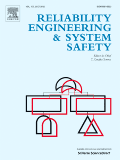
RELIABILITY ENGINEERING & SYSTEM SAFETY
Transforming Knowledge into Reliable Engineering Practices.RELIABILITY ENGINEERING & SYSTEM SAFETY is a leading interdisciplinary journal published by Elsevier Sci Ltd, dedicated to advancing knowledge in the fields of applied mathematics, industrial and manufacturing engineering, and safety, risk, reliability, and quality. With a significant presence since its inception in 1983, this esteemed journal, identifiable by ISSN 0951-8320 and E-ISSN 1879-0836, holds an impressive impact factor and ranks in the top quartile (Q1) of its categories according to the most recent metrics. Specifically, it has achieved remarkable standings in Scopus, ranking #3 out of 207 in Safety, Risk, Reliability and Quality, marking it in the 98th percentile, and #21 out of 384 in Industrial and Manufacturing Engineering, at the 94th percentile. This distinction underscores the journal's vital role in shaping research and innovation in its fields. While it does not operate under an open access model, RELIABILITY ENGINEERING & SYSTEM SAFETY remains an essential resource for researchers, professionals, and students, aiming to publish high-quality articles that facilitate the understanding and application of reliability engineering and systemic safety within various industrial contexts. Stay ahead in cutting-edge research by engaging with the latest articles and findings from this influential journal.
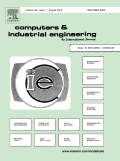
Computers & Industrial Engineering
Fostering Collaboration for a Smarter Industrial LandscapeComputers & Industrial Engineering, published by PERGAMON-ELSEVIER SCIENCE LTD, is a premier journal dedicated to advancing the fields of computer science and industrial engineering. Since its inception in 1976, this journal has become a vital resource for researchers and professionals, with a remarkable impact factor and distinguished Q1 quartile rankings in both the Computer Science and Engineering categories, reflecting its significant influence and respect within the academic community. Featuring a comprehensive scope that encompasses innovative computational methods, system optimization, and industrial applications, it serves as a platform for high-quality research that explores the interplay between technology and industrial processes. Although it does not currently offer open access, the journal's robust indexing in Scopus—ranked #12 in General Engineering and #15 in General Computer Science—underscores its commitment to disseminating cutting-edge knowledge and fostering collaboration among scholars, practitioners, and students globally. With its convergence spanning until 2024, Computers & Industrial Engineering is positioned at the forefront of emerging trends, making it an essential reference point for anyone dedicated to the evolution of technology in industry.
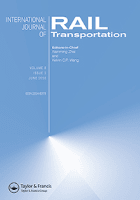
International Journal of Rail Transportation
Leading the charge in rail transportation research.International Journal of Rail Transportation is a premier academic publication dedicated to advancing the field of rail transportation, published by Taylor & Francis Ltd. With an impressive convergence of scholarly contributions from 2013 to 2024, the journal aims to disseminate high-quality research and innovative ideas in automotive engineering, mechanics of materials, and transportation. The journal proudly holds a Q1 ranking in both Automotive Engineering and Mechanics of Materials for 2023, as well as a Q2 ranking in Transportation, signifying its impact and relevance in the respective disciplines. Additionally, it is recognized within the top percentiles in its Scopus rankings, affirming its commitment to producing significant insights that inform both academic and industrial practices. While currently not open access, the journal strives to connect researchers, professionals, and students with cutting-edge developments in rail transportation. By fostering collaboration and knowledge sharing, the *International Journal of Rail Transportation* serves as an essential resource for those seeking to push the boundaries of transport engineering and contribute to sustainable infrastructure solutions.
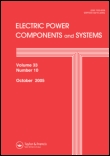
ELECTRIC POWER COMPONENTS AND SYSTEMS
Transforming Energy Engineering Through Research and CollaborationELECTRIC POWER COMPONENTS AND SYSTEMS is a respected peer-reviewed journal dedicated to advancing the field of electrical and electronic engineering, energy engineering, and power technology. Published by Taylor & Francis Inc, this journal boasts a dynamic scope that encompasses a wide array of topics relevant to power systems, including renewable energy, power distribution, and component reliability. With an impact factor indicative of its ongoing contribution to research, it ranks in the Q3 category across multiple engineering disciplines according to the latest metrics. Researchers and professionals will find this journal an invaluable resource, offering insights into the latest developments and innovations in electric power systems from its inception in 2000 to the current era and beyond. Accessible online with Open Access options, it caters to both established experts and emerging scholars looking to deepen their knowledge and foster collaboration within this critical field.

Electrica
Illuminating the path of electrical engineering excellence.Electrica is a prominent open access journal dedicated to advancing the field of Electrical and Electronic Engineering. Published by AVES since its inception in 2018, it has rapidly established itself as a crucial platform for disseminating high-quality research and innovative findings within the engineering community. With an ISSN of 2619-9831, Electrica operates under a rigorous peer-review process to maintain its scholarly integrity while promoting accessibility and knowledge sharing. Positioned in the third quartile of the 2023 rankings for Electrical and Electronic Engineering on Scopus, the journal has garnered a significant following, ranked #490 out of 797 in its category, reflecting its growing impact in the field. Researchers, professionals, and students can benefit from the wealth of resources available through this journal, as it not only provides a space for emerging ideas but also fosters collaboration and dialogue among experts. The journal's commitment to disseminating impactful research continues to shape the future of electrical engineering in Turkey and beyond.

International Journal of Power and Energy Systems
Empowering Research in Energy InnovationInternational Journal of Power and Energy Systems, published by ACTA PRESS, serves as a vital platform for research and discourse in the multifaceted fields of applied mathematics, electrical and electronic engineering, and energy engineering. With an ISSN of 1078-3466 and an E-ISSN of 1710-2243, this journal covers a broad spectrum of topics pertinent to power and energy systems, showcasing innovative research from its inception in 1996 through to its projected contributions in 2024. Operating from Calgary, Canada, the journal, though not currently open access, provides invaluable insights into the challenges and advancements within these domains, as reflected in its categorization in the Q4 quartile across multiple indices. Despite being positioned in lower output percentiles in 2023 rankings on Scopus—specifically, #212 in Energy Engineering and Power Technology—it remains a critical resource for scholars seeking to expand the frontiers of knowledge in energy sustainability and system efficiency. Researchers, professionals, and students alike will find the journal’s commitment to fostering academic dialogue and disseminating pioneering results both essential and inspiring.

Dyna
Catalyzing dialogue in the evolving landscape of engineering.Dyna, with the ISSN 0012-7361 and E-ISSN 1989-1490, is a prominent academic journal published by the Federación Asociaciones Ingenieros Industriales España. Situated in Spain, it is dedicated to advancing knowledge and research in the field of engineering, specifically focusing on diverse aspects within the Engineering (Miscellaneous) category. With a current Scopus rank of #245 out of 307, Dyna operates in the 20th percentile, emphasizing the journal’s commitment to fostering innovation and dialogue among scholars and industry practitioners alike. Although it operates under traditional access models, the journal is pivotal for researchers, professionals, and students seeking to contribute to the evolving landscape of engineering disciplines. Covering a broad range of topics from 2009 to 2024, Dyna aims to facilitate interdisciplinary collaboration and disseminate cutting-edge findings that can influence both academia and industry.

Smart and Sustainable Manufacturing Systems
Driving progress in sustainable manufacturing systems.Smart and Sustainable Manufacturing Systems is a cutting-edge scholarly journal published by the American Society for Testing and Materials, focusing on the intersection of technology and sustainable practices within the realms of manufacturing and systems engineering. Since its inception in 2017, the journal has established itself as a vital resource for researchers and practitioners seeking to advance the field, particularly through innovative practices that enhance efficiency and reduce environmental impact. The journal is indexed with growing recognition, holding a 2023 category quartile ranking of Q2 in Industrial and Manufacturing Engineering and Q3 in both Computer Science Applications and Control and Systems Engineering. Although it operates without open-access options, the journal serves a dedicated audience by offering peer-reviewed, high-quality research aimed at fostering the sustainable progression of manufacturing systems. With its robust Scopus rankings, including a percentile ranking of 51st in Industrial and Manufacturing Engineering, the Smart and Sustainable Manufacturing Systems journal is positioned as a crucial platform for disseminating knowledge and supporting the global dialogue on sustainable industrial practices.